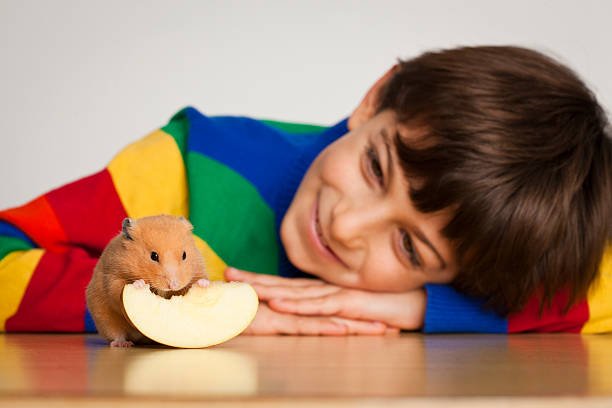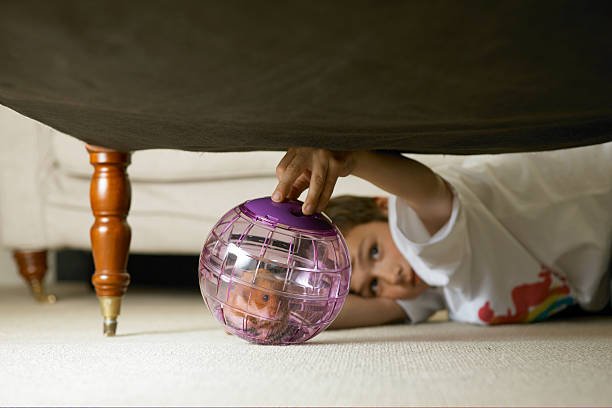Best Hamster for Kids: Choosing the Right Pet for Little Hands and Big Hearts
This post contains affiliate links. This means I will make a commission at no extra cost to you should you click through and make a purchase. Read the full disclosure here.If you’re a parent looking for a first pet that’s small, quiet, and gentle enough for a child to care for, a hamster might seem like the perfect choice—and in many ways, it is!
Hamsters are low-maintenance, super cute, and live comfortably in small spaces, making them ideal for apartments, bedrooms, or cozy corners of a family home. But here’s the catch: not all hamsters are equally suited for kids. Some breeds are friendlier, easier to handle, and more predictable than others.
In this guide, we’ll explore the best hamster breeds for kids, how to choose one that matches your child’s age and personality, and what setup will keep both your child and their tiny pet happy, healthy, and safe.
Why Hamsters Make Great Pets for Kids
Hamsters are among the most popular beginner pets for children—and for good reason!
Here’s what makes them so appealing:
- Small and inexpensive to care for
- No walking required
- Quiet (great for small apartments or shared rooms)
- Teaches responsibility in a manageable way
- Fascinating to observe and interact with
And let’s be honest… watching a hamster stuff food in its cheeks never gets old!
Best Hamster Breeds for Children

There are five main types of pet hamsters—and while they’re all adorable, only a few are truly child-friendly.
1. Syrian Hamster (Teddy Bear Hamster)
Best choice for younger children (ages 7–12)
Size: 5–7 inches
Temperament: Gentle, easy to handle, slow-moving
Lifespan: 2–3 years
Solo pet: Yes — must live alone
Why they’re great for kids:
- Larger size makes them easier to hold
- Calmer and less likely to bite when tamed
- Easier to spot clean and feed
They’re the most popular hamster for a reason—super cuddly and full of personality.
2. Winter White Dwarf Hamster
Best for older kids (10+) who are gentle and patient
Size: 3–4 inches
Temperament: Sweet, more social, but quick
Lifespan: 1.5–2 years
Solo or pair: Can sometimes live in pairs (same sex)
Why they’re great:
- Calm when tamed
- Adorable round body and tiny size
- Still manageable with supervision
They’re perfect for a quiet, curious child who wants a “tiny friend” to watch and learn about.
3. Campbell’s Dwarf Hamster
Best for tweens/teens (12+) with supervision
Size: 3–4 inches
Temperament: Curious but can be nippy if startled
Lifespan: 1.5–2 years
Why they’re not ideal for young kids:
- Skittish and fast-moving
- Smaller size = harder to hold
- Can bite when scared
With patience and gentle care, they can become tame—but they’re not ideal for small children.
4. Roborovski Hamster (Robo)
Best for families who want a pet to watch, not handle
Size: 1.5–2 inches (the tiniest!)
Temperament: Fast, shy, and very cute
Lifespan: 2–3 years
Why they’re challenging for kids:
- Almost impossible to hold
- Very fast and hard to catch
- Bond more with environment than people
Great for an observation cage in a child’s room—but not for hands-on interaction.
What Age is Best for a Child to Get a Hamster?
There’s no magic number, but generally:
- Ages 7–12: Best age range for Syrian hamsters
- Under 6: Not recommended—hamsters are delicate and may be dropped
- Teens (13+): Can usually handle any breed with proper care and research
Always make sure an adult is involved in cage cleaning, feeding, and supervising handling.
How to Set Up a Kid-Friendly Hamster Habitat
Children should always care for a pet under guidance—but you can set your child up for success with a cozy, low-stress environment.
Kid-friendly cage setup:
- Choose a spacious enclosure (450+ sq in)
- Use paper bedding for soft burrowing
- Avoid plastic tubes or tall cages (hard to clean and dangerous for falls)
- Add 1–2 easy-to-clean hides + a solid running wheel
- Let your child decorate with themed name signs or a little calendar
Make it feel special—it helps them take ownership and pride!
How to Help Kids Safely Handle Their Hamster

Children can learn empathy and patience through animal care—but start slow!
Teach them to:
- Wash hands before and after
- Sit on the floor when holding the hamster
- Use two hands to cup the hamster (not grip it)
- Speak gently and move slowly
- Never wake the hamster (they can get grumpy!)
Tip: Let your hamster crawl onto your hand rather than grabbing—it builds trust and confidence.
Lessons Hamsters Teach Children
Raising a hamster helps kids learn:
- Responsibility and routine (feeding and cleaning)
- Patience and empathy
- Gentle handling
- Animal body language and emotions
- The circle of life (their lifespans are short, but meaningful)
It’s not just about owning a pet—it’s about nurturing and growing through it.
Final Thoughts
The best hamster for kids is one that matches your child’s maturity level, patience, and your family’s lifestyle.
For most families, the Syrian hamster is the safest, most rewarding choice. With a soft cage setup and a little guidance, your child’s hamster can become their favorite bedtime listener, homework buddy, or quiet companion.
In a cozy home, even the tiniest pet can spark big joy and beautiful memories.














